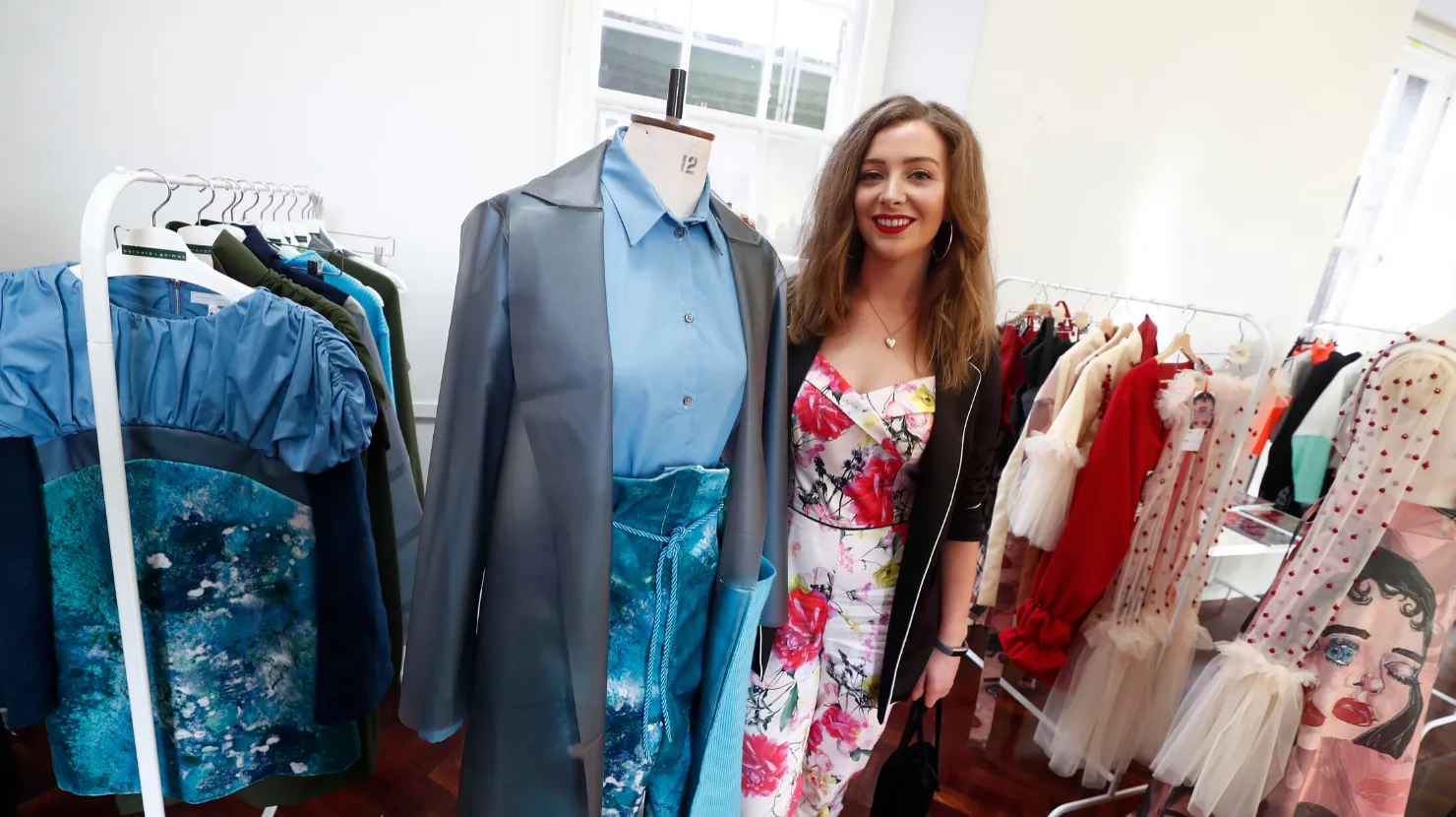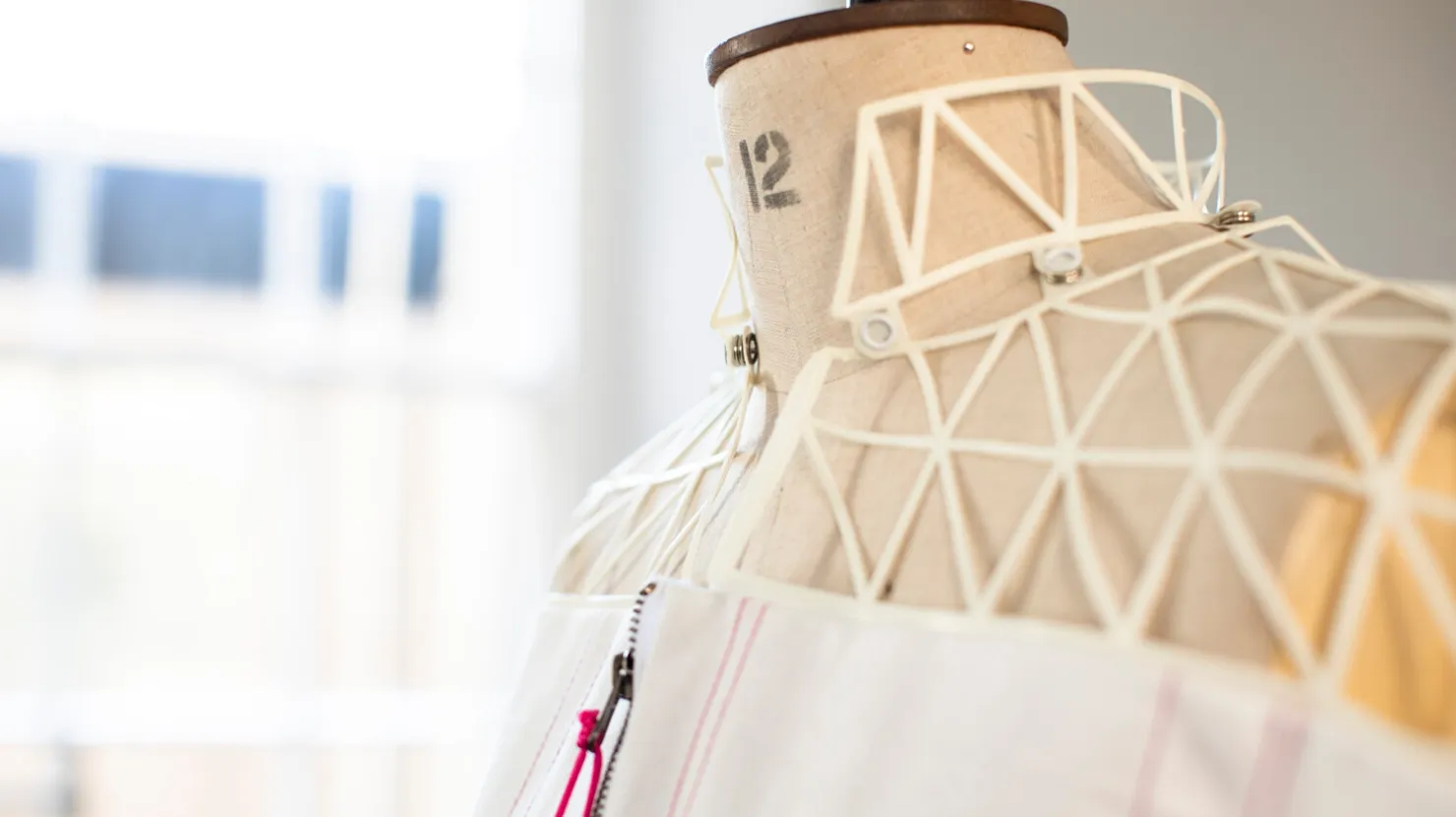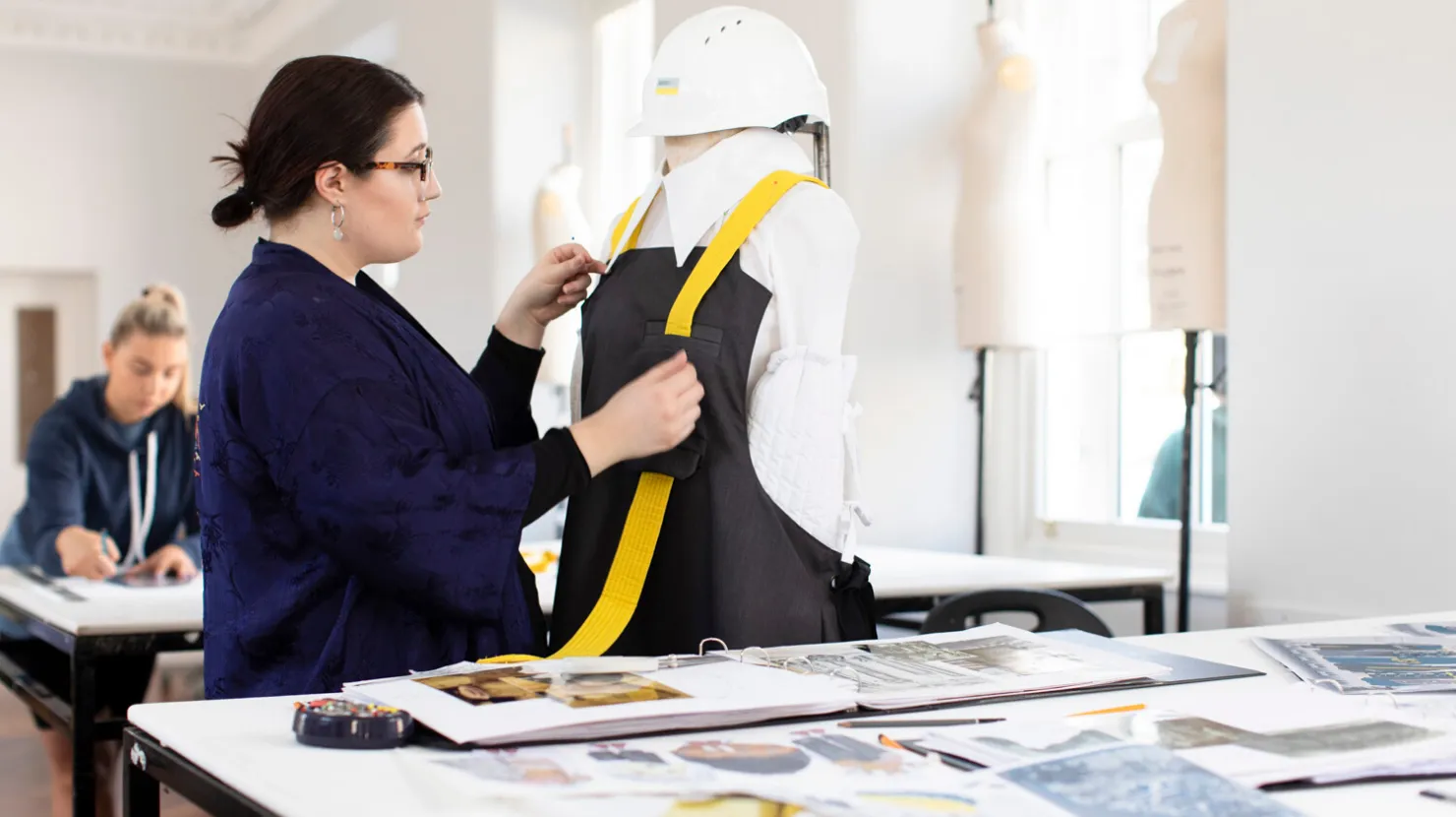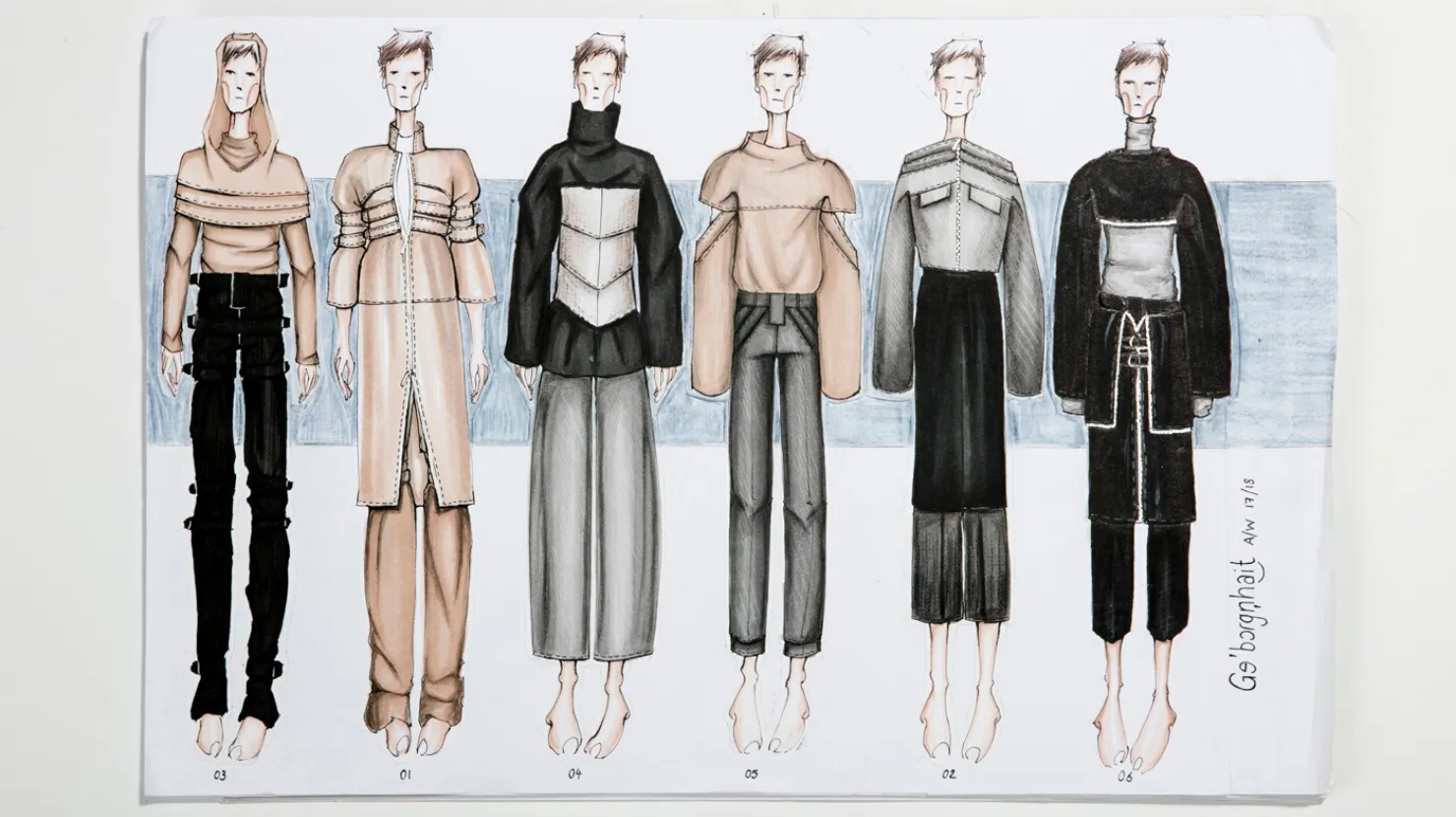BA in Fashion Design
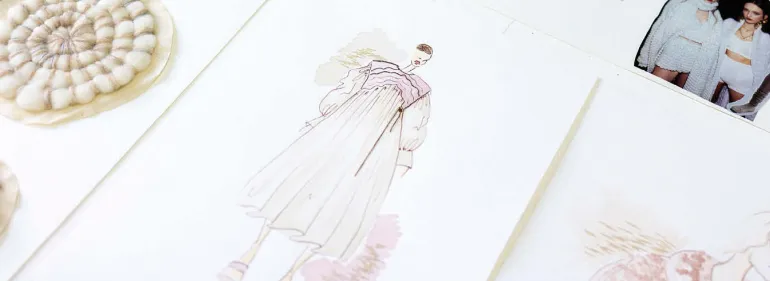
Course Overview
Cultivate your creativity, innovate and develop your original ideas with this practical design course.
Explore your personal design direction with our BA in Fashion Design and gain an incredible opportunity to succeed in the fashion industry.
Why Study Fashion Design at Griffith College?
Our BA in Fashion Design is a three-year level 7 degree course available on a full-time basis. The course will immerse you in the fashion industry and prepare you for any role that requires a creative flair and business knowledge.
- Through our Fashion Design and Garment Construction modules, students develop practical skills and explore a personal design direction.
- Our syllabus offers training in the most up to date dynamic design communication software complemented with brand and marketing knowledge.
- Students create a fashion collection, exploring their personal design direction from idea generation, design development and pattern creation through to garment construction using contemporary production techniques.
- Our programme reflects the changes taking place in the fashion industry, recognising that traditional manufacturing bases have been relocated to low-cost economics.
- Students learn to think creatively when faced with design challenges, adapt to industry changes and develop the key skills required to liaise with offshore production facilities.
- Develop professional practice skills from modules in brand and marketing, business, and entrepreneurship
- Our graduates are prepared for employment as fashion designers liaising with offshore production facilities, buyers, trend forecasters, visual merchandisers, or any other role that requires the application of creative design supported by technical and business knowledge.
- 100% continuous assessment means learners do not need to sit written exams.
- The calibre of our fashion graduates' work has been recognised through numerous industry awards and exhibitions.
- Our Design Faculty graduates work showcases during our annual Creative Week
- Our graduates have strong brand communication and entrepreneurial skills, their collections can be found at Brown Thomas Create, Havana Boutique, Marion Cuddy, Om Diva and at the Design House.
- Full access to Student Adobe Creative Cloud - All Apps plan, which gives you 20+ cutting-edge creative tools for desktop, mobile, and web
Course Highlights
- Create a dynamic fashion collection
- Develop digital fashion design and visual communication skills
- Establish brand, marketing and entrepreneurial skills
- Expert lecturers create a dynamic learning environment
- Live industry projects
- Fashion graduate exhibition with industry internship awards
Experienced Lecturers
During the course you’ll be taught by practicing designers, garment technologists, buyers, art historians, photographers, journalist, business and craft practitioners, ensuring that the faculty maintains strong industry links.
Fashion Internships and Careers
Year on year Griffith College has awarded students and graduates internships in fashion companies both in Ireland and abroad. Graduates of our Fashion Degree have gone on to work at Avoca, Caroline Kilkenny, CVUK London, Ella Boo, Ellis Bridal, Emmett Equestrian, Esquire Footwear, Filmbase, Gareth Pugh, GW Global Trading, Heatons, Helen Mcalinden, Home Studios London, Hybrid Fashion, Joanne Hynes Design, Kathy De Stafford, Louboutin, Louis Copeland, Louis Vuitton, Mariana Jungmann, Mirjam Rouden, Native Clothing Designs, Nicole Farhi, Percival, Primark Stores, Reiss, Rick Owens, Simone Rocha, Soho Apparel, Styletex and Vivienne Westwood.
Questions? Have a look at our FAQ section.
Intake Dates
- Dublin - Full-Time - September 2024
Are you applying through the CAO?
Check out our CAO HUB for everything you need to know about applying through the CAO!
Course codes
- Dublin: GC495
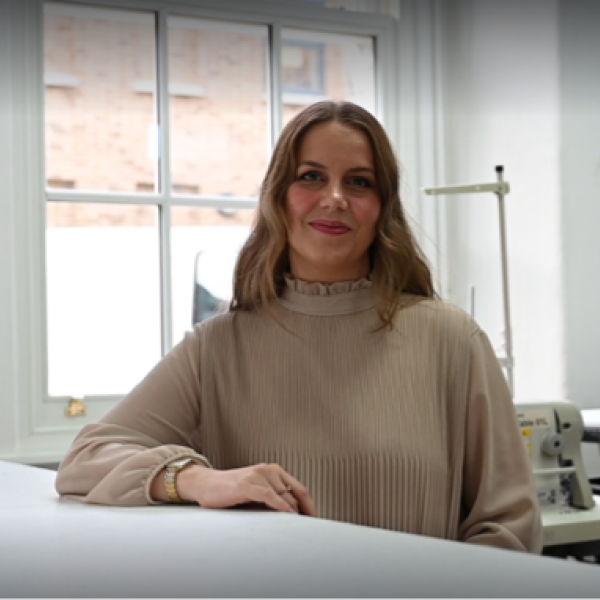
I had an amazing time here at Griffith College, we had a great class and had really good fun together. We learned so much. It was a great experience to come to a different country, the school does a great job in supporting international students. We did a lot of different projects such as our main collection for graduation and smaller projects like the Beacon and Primark projects. It was a great opportunity to look into different fields, different segments and learn how to work for specific customers. The tutors worked closely with us and we had real-life industry experience.
BA (Hons) in Fashion Design
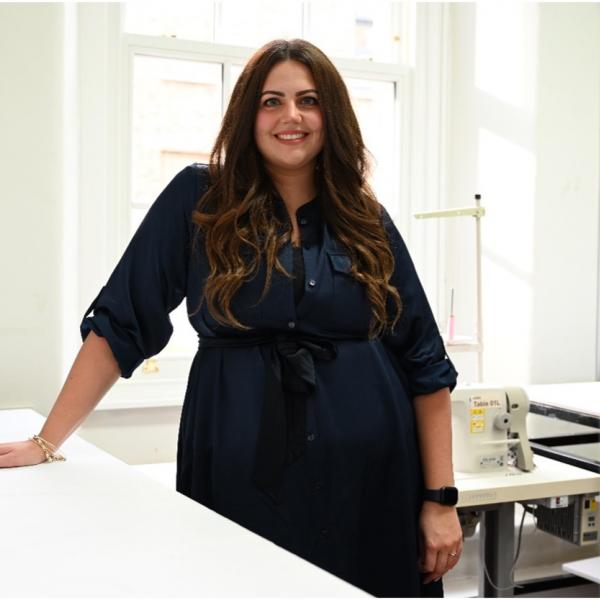
It was a great opportunity to work on a real industry project with Beacon Hospital as part of this course. The whole design faculty is really nice, nice rooms and facilities and the teachers do a pretty good job. I felt good during my time at Griffith College and was happy with the outcome of all of our projects, they made us proud as students.
BA (Hons) in Fashion Design
Course Details
The BA in Fashion Design prepares students for careers in fashion. The programme emphasises project-based learning, requiring learners to experiment and innovate in order to create imaginative and realistic design solutions. Learners are immersed in the fashion industry from traditional methods of tailoring, draping, and embellishment techniques to fashion illustration and computer-aided design (CAD) skills. The fashion design modules allow learners to explore a personal design style; from idea generation, design development, and pattern creation through to garment construction using contemporary production techniques. Graduates of the programme are working as assistants in fashion design and trend forecasting companies.
Graduates of the BA in Fashion Design may also progress to the final stage of the related BA (Hons) in Fashion Design, either directly or a later time of their choosing.
Year One
The aim of the module is to give learners a chance to explore their skills in new media and experiment with art and design tools and techniques and interdisciplinary approaches.
The objectives are to introduce studio practice portfolio production, fulfilling assessment objectives, health and safety, working processes, and the beginning of a portfolio of work. It also introduces the learner to group work and independent work.
The aim of the module is to enable the learner to develop skill in the use of analytical drawing as a means of communicating design ideas.
The objectives are to introduce: Freehand Drawing; Analytical Drawing and Painting; Using drawing in concept development; Freehand perspective drawing; and Presenting Visual materials. It also introduces the learner to independent work.
The aim is to enable the learner to develop skill in the use of selected software through experimenting with software through the use of montages, layout and other presentation skills.
The objectives are to introduce the learner to computer operating systems, internet and virtual databases and Word and PowerPoint.
The aim of the module is to enable the learner to appreciate more complex principles of design and to allow this learning is applied to specific design functions. The objectives are to enable the learner to understand the basic principles of design, encourage learners to write with clarity, precision and fluency, and develop an analytical approach to research methods and the written word.
The aim of the module is to draw upon the summation of knowledge and skills acquired during the first-semester experience. Learners will have the opportunity to foster and promote innovative ideas and practical work whilst extending their potential contextual and technical abilities in preparation for progression to higher education.
The aim of the module is to encourage learners to use freehand drawings as a means of communication and to develop the learners’ awareness of the importance of graphics in everyday life; to provide learners with an opportunity to develop a range of skills related to graphic communication; to familiarise learners with various drawing systems; and to provide an opportunity for learners to experiment with a range of materials to enhance presentation. The objectives are to explore and introduce: Colour optical illusions, draw/trace simple geometric sketches, freehand perspective drawing, presenting visual materials and technical drawing.
The aim of the module is to investigate the design complexities of compositional layered image-making using industry-standard software such as Photoshop, Image Ready, In-Design, Illustrator
The objectives are to introduce the learner to communicate their drawing skills using vector-based graphics.
The aim of the module is to enable learners to compare and contrast different historical periods and styles in art and design and understand their evolution through time. This subject area will also develop the learner’s skills in visual analysis that will be required in other modules in the programme.
The objectives are to introduce learners to key historical styles and periods in European art and design from Neoclassicism (c.1790) up to early Modernism (c.1914). Time will also be dedicated to academic referencing and essay research.
Year Two
This is the core design module. It is project-led and is the key integrative module, which introduces the essential knowledge required to develop basic fashion design skills. Learners practice fashion design methodologies through project work, which involves authentic learning referencing industry practice. Learners work through project briefs that introduce various stages of design; including research, concept, design development, selection and presentation skills. Learners develop drawing skills and appropriate design research methods to develop an original concept to inspire personal creative ideas to drive collections. As the learners start to understand the process necessary to create an original design, confidence in design development skills and solutions builds. Learners acquire creative awareness and explore industry standards to translate their design details to basic specification sheets for realisation in Garment Construction 1. Learners are introduced to the essential areas of the fashion design process and acquire skills to allow for further development throughout the programme.
Learners acquire skills to translate their design from a specification sheet to a final complete garment using basic production techniques. Learners achieve a basic level of technical awareness and skills required to create their designs and develop effective communication skills using relevant industry terminology. Learners must demonstrate health and safety standards when using industry equipment and sewing machines in a workroom environment. Learners achieve a degree of competency and confidence to measure, create and manipulate blocks, drape on the stand, assemble garment using appropriate sewing techniques and materials, understand size charts and basic garment specification sheets. Projects explore industry standards and practice, so learners can differentiate between couture and industry production techniques.
This module advances the learners’ skills in Bitmap and Vector Graphics applications such as Adobe Illustrator. The learners are also taught how to combine work in 2D, 3D and Photoshop to illustrate designs on graphic layouts.
This module is designed to give the learner a broad understanding of how the fashion industry operates by looking at the sectors in the fashion industry from couture to mass-production, the schedule, processes and roles involved. The influencing factors which mould and drive the fashion industry such as the fashion business cycle, the fashion calendar, International Colour Authority (ICA), textiles manufacturers, trend forecasting agencies, technology, quick response (QR) manufacturing processes, brands, the role of celebrity, fast fashion and the consumer. Looking at how fashion brands are restructuring with a vision to implement ethical trading, corporate social responsibility and sustainable design.
This module introduces the key designers, styles and periods to trace the evolution of historical fashion in the social, economic and political contexts from the mid-nineteenth up to the current time. It focuses on the most important couturiers that were active from c.1850, describing how their key innovations were made and worn and their contribution to the history of haute couture. It will enable the learner to analyse, compare and contrast different periods and styles in design, and describe the garments and accessories that make up a fashionable outfit. This subject area encourages students to make connections between theory and practice, to engage in critical analysis of contemporary designers and act as a reference point for research and development of current issues, themes and ideas that are required in other modules in the programme. The module introduces academic referencing, essay research and structure and writing skills, enabling learners to establish their own voice in an academic environment.
This the core design module. It is a project-led and is the key integrative module, which introduces essential knowledge required to develop fashion design skills. Learners practice fashion design methodologies through project work that involves authentic learning referencing industry practice. Learners work through project briefs that embed much of the design theory and drawing skills explored in semester 1. As the learners understand the process necessary to create an original design, confidence in design development and presentation skill builds. Learners acquire creative awareness and explore industry standards to translate their design details to basic specification sheets for realisation in Garment Construction 2. Learners experience the fashion design process and build on skills to prepare for the next stage of the programme when specialist areas of design require advanced design skills.
Learners acquire a standard level of technical awareness and the skills required to create their designs and communication using relevant industry terminology. Learners must demonstrate health and safety standards when using industry equipment and sewing machines in a workroom environment. Learners achieve a degree of competency and confidence to create a creative pattern, drape on the stand, assemble garment using appropriate sewing techniques and materials. Essential skills to apply pattern drafting, sewing and garment assembly techniques to design are developed. Projects explore industry standards and practice, so learners use basic industry production techniques. Learners acquire skills to translate their design from a specification sheet to a final complete garment using production techniques, demonstrating the skills required to progress to the next stage of the programme.
This module teaches the learner a variety of advanced Bitmap, Vector Graphics editing skills and to apply practical desktop publishing solutions. It also teaches the learner to creatively apply and communicate effectively graphic techniques employing the use of a grid and typography, to apply the technical skills for print production, and to format a design and layout project or digital drawing for print.
This module introduces the core elements of textiles and the factors that influence the cost, aesthetic, comfort, durability, care, safety, function and performance of textile products. Studying textiles is like learning a new language, many terms and facts must be learnt. Learners will be introduced to fibre theory and classification systems, the basic principles of yarn and fabric construction, fabric production and finishing, fabric performance testing methods and procedures. Learning advances the learners' ability to identify fibres, fabric and performance, to emphasise the importance of the application of appropriate material to design, to enable the appropriate selection of fabric for garment design. Learners are introduced to EU textile legislation, such as performance fabrics and sustainability and issues pertinent to textile and garment manufacturing industries.
This module provides a common core of design culture and theory taken by all learners on the design undergraduate programmes. While the learning outcomes are the same no matter which of the programmes you are following, your output from this module will reflect the media and approaches of your chosen programme. This module brings together students from all undergraduate programmes to give you the opportunity to engage in analysis of your own and others’ ideas in a challenging and creative environment. Learners will be introduced to the ways in which the contemporary design context and theory inform design practice. It will introduce them to ways in which designers engage with ideas, encourage the learner to explore your own work through critical reflection on the debates and practices of design and see the applicability of these to your own discipline. You will explore the significance of context in relation to the movements after Modernism and appraise different contributions to modern architecture and design. The module prepares learners critically and theoretically for the thesis in the final year of their honour degree.
Year Three
This is the core design module. It is project led and is the key integrative module. Learners gain specialist knowledge for sectors within fashion industry and design a Statement Collection and a Mini Collection. These projects involve authentic learning, market research and equip learners with knowledge of fashion industry sectors to facilitate possible future employment opportunities. The projects require industry-specific research, creative design and visual presentation skills appropriate to the specialist area. Workshops in areas such as drape, heritage tailoring, vernacular design, market and range planning support concept development. Learners practice advanced and creative 2D & 3D design development. Draping on the stand techniques to achieve a higher level of creativity and fluent silhouette development. Learners translate detailed design to specification with appropriate material considerations and identify production techniques for realisation in Garment Construction 3 and 4. Learners are expected to successfully communicate their design by achieving a standard of visual literacy and articulation demonstrating reflection and self-critique with specialist industry know-how.
Learners build on the basic pattern drafting skills introduced in the first year, acquire more advanced technical tailoring, drape, pattern drafting and sewing skills required to support Fashion Design 3 projects. Learners are introduced to a higher level of skill with projects which involve authentic learning, referencing industry practice. The curriculum is structured to advance technical skills to develop the learners’ confidence, whilst developing technical awareness supporting the exploration of creative design solutions. Draping on the stand builds the learner’s confidence and fluency of design moving towards experimentation with more advanced pattern drafting in preparation for Garment Construction 4 when advanced pattern drafting skills are required to execute a Mini Collection meeting industry standards.
Design Futures module has been designed with the intention of accommodating emerging methodologies, knowledge and skills, which are developing as a response to the increasing complexity of contemporary culture and design practice. In this module, we will explore how practice is informed by context and theory. This module can be taken by students from all of the design programmes. The learning outcomes are the same regardless of the discipline of design you are following, the learners' output from this module will reflect the media and approaches of your programme’s disciplines and subject areas. There will be opportunities for the learner to critically analyse, debate and address key current issues and debates associated with design as they relate to their discipline-specific practice. The module is designed to challenge and develop your ability to critically reflect upon competing concepts and contemporary debates associated with design and related creative practices, as well as their impact within local and global contexts.
Fashion illustration affords the learner with the opportunity to research and critically evaluate the professional standards of fashion illustration in terms of cultural, historical roles and contemporary stylistic influences and develop new skills. This subject area aims to enable the learner to further develop their freehand fashion drawing skills and develop new digital fashion drawing skills, learning to effectively communicate design and meaning. Learners also produce a digital vector library of technical flat garment drawings, symbols and brushes for design details; develop freehand and digital fashion figure poses and art forum fashion illustration.
This module provides learners with an understanding of the role and principles of marketing for a start-up business. The learners will appreciate when and how marketing is applied in the creative industries, learn about market segmentation, targeting and positioning and assist learners to analyse all aspect of the traditional marketing mix. Learners will conduct basic marketing research, analysis and learn how to apply research findings to specified business projects. The module enables learners to articulate and interact with audiences, effectively communicating ideas and work in a range of situations. The objectives are to give learners a broad understanding of the key marketing concepts and practices in the creative environment. This subject area introduces the foundations of marketing principles and roles, providing an overview of the nature and scope of branding and its role in successful creative business strategies.
This is the core design module. It is project-led and is the key integrative module. Learners build on the fashion design and technical skills acquired in Fashion Design 3, with a higher level of creative awareness and industry processes. The emphasis is based on developing the design fluency and the learner's design portfolio; although designs are created, garments are not produced. The aim of this module is to broaden the learner’s design experience and skill set by introducing areas of specialist knowledge e.g. Trend forecasting, print, knit and accessory design. Workshops involve trend research, planning and forecasting, knit and print design and fashion illustration. These areas require industry and skill-specific research, advanced design and new illustration techniques and visual presentation skills appropriate to the forecasting sector expectations. Learners must achieve fluent design competencies and a portfolio demonstrating a standard of visual literacy and articulation to successfully communicate design with specialist industry expertise, demonstrating readiness to progress to the final stage of the level 8 programme.
This is the key support to the core capstone Fashion Design module. It builds on the advanced technical tailoring, drape and specialist flat pattern drafting and sewing skills introduced in the Garment Construction 3. Learners create their Mini Collection designed in Fashion Design 3 and explore industry standards to acquire an advanced degree of competency in pattern drafting to achieve the confidence required to create their designs. Draping on the stand continues to build a higher level of creative awareness, confidence and fluency of design, moving towards more advanced creative pattern drafting techniques. Following sewing workshop demonstration, using industry equipment learners develop a range of advanced sewing and finishing skills with confidence. Fundamentally, the subject prepares the learners to progress to employment or to the final stage of the level 8 programme when advanced pattern drafting and garment construction are required to execute a degree collection meeting industry standards.
This subject area aims to afford the learner to develop new digital skills to present advanced design abilities and specialist knowledge of the forecasting industry, with appropriate drawing and presentation techniques to effectively communicate. In support of Fashion Design 4 learner learn how to create printed textile design, repeat pattern, colourways and apply fabric rendering techniques to fashion illustration. Digital Fashion Portfolio 1 enables the learner to further develop effective visual communication skills, working across digital platforms. Learners develop advanced bitmap digital imaging and vector drawing skills and create a digital portfolio through a desktop publishing application. The module affords the learner to develop digital project planning skills, with the opportunity to research and critically evaluate and develop effective Digital Imaging, typography, composition and layout presentation skills. While learning how to create a digital textile, digitally drawn fashion figure Illustration and technical flats with rendering.
The aim of the module is to enable learners to develop skill in Photography and Video so they can apply them to their design projects. The objectives are to enable the learner to develop skill in the use of the digital camera for photography and video and explore industry standards in this area. It will introduce the basic principles of photography and video with the emphasis being on images within their design studio practice.
This module addresses key factors to be considered when starting a small business, entrepreneurial theories, business concept through planning a feasibility project and a lean start-up style canvas and customer analysis.
Timetables
Timetable coming soon.
How to Apply
Entry Requirements
There is NO portfolio requirement for this course.
Advanced Entry
Applicants with a Level 6 qualification in a related discipline may be eligible for advanced entry onto this course. Candidates will be asked to provide relevant transcripts and a portfolio of work in support of their application. Pending the strength of the portfolio, candidates may be eligible for entry onto year 2 or year 3 of this programme.
All candidates with a Level 6 qualification, regardless of age, will need to apply directly here.
*Please note, advanced entry applications are assessed on a case by case basis and offers are made at the discretion of the faculty.
English language
Applicants from countries where English is not the first language will also be required to provide evidence of sufficient English language abilities.
Griffith College is accepting the online Duolingo English Test (DET) as valid proof of English proficiency. Please see here for further details.
For more information on any of the above, please contact [email protected].
How to Apply
CAO Applicants / Applicants under 23 years of age:
Applicants under 23 years of age on 1st January the year the course begins must apply through the CAO system. Please consult the CAO website for details on key dates for applications.
Applicants under 23 years old on the 1st January the year the course begins must submit a copy of their Leaving Certificate results. Candidates will need to have obtained a minimum of five subjects at grade O6/H7. These results must include a language (English or Irish) and either Maths or Art.
Candidates with equivalent grades from FETAC colleges and those holding awards including BTEC qualifications will also be considered.
CAO course code: GC495
Applicants over 23 years of age (Mature students):
Applicants who are 23 years of age on or before the 1st January the year the course begins, may apply as a mature student. Mature students must apply to Griffith College directly online using the Apply Online facility.
Mature applicants will be asked for a copy of their passport.
Fees
For purposes of fee calculation, residence is counted from the time of application.
Please note that not all study modes may be offered at all times; for confirmation, refer to the Intake dates on the Overview tab.
Tuition Fees
Study Mode: Full-Time
Dublin : EUR 6,700.00
Study Mode: Full-Time
Please refer to the Irish/EU Living Abroad Fees.
Study Mode: Full-Time
Please refer to our Non-EU Tuition Fees section.
Non-EU students: a Student Services and Administration fee of EUR200 is payable each academic year in addition to the fees quoted below.
An Academic Administration Fee of EUR250.00 and a 2% Learner Protection Charge is applicable each academic year in addition to the fees quoted.
Direct Debit Scheme
Students wishing to pay for their fees monthly may avail of our direct debit scheme. Please view our Fees information page to review the payment plan schedule and how to apply.
Sponsorship
Is your company paying for your course?
They will need to complete a Griffith College Sponsorship Form and send this to the Student Fees Office:
- Post: Student Fees, Griffith College Dublin, South Circular Road, Dublin 8
- Email: [email protected]
2% Learner Protection Charge
All QQI accredited programmes of education and training of 3 months or longer duration are covered by arrangements under section 65 (4) of the Qualifications and Quality Assurance (Education and Training) Act 2012 whereby, in the event of the provider ceasing to provide the programme for any reason, enrolled learners may transfer to a similar programme at another provider, or, in the event that this is not practicable, the fees most recently paid will be refunded.
Progression
Academic Progression
Graduates of the BA in Fashion Design may also progress to the final stage of the related BA (Hons) in Fashion Design.
Career Progression
Through the BA in Fashion Design, you will have gained valuable design experience, built a strong foundation of creativity, and covered a diverse range of topics. There is a wide range of career options for our graduates including:
- Fashion design assistant
- Fashion illustrator
- Costume design assistant
- Fashion forecaster
- Fashion stylist assistant
- Fashion blogger
- Pattern drafter assistant
- Fabric & trims purchaser
- Garment technologist assistant
- Fashion Illustrator
- Fashion Wholesale
- Fashion Public Relations
- Brand Ambassador
- Trend Forecaster
- Fashion marketing

